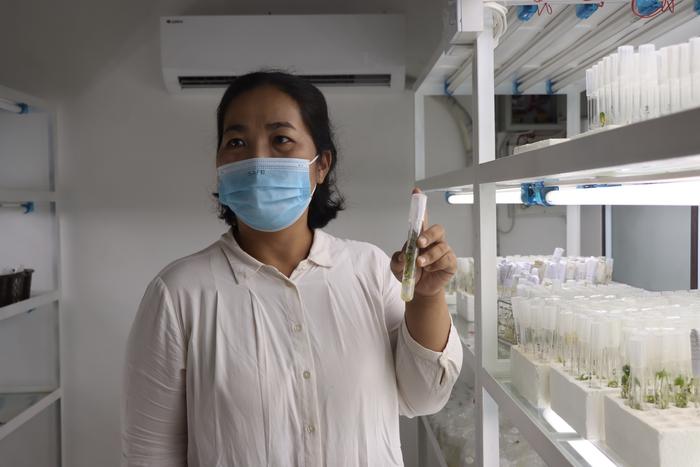In a recent breakthrough, DNA sequencing technology has uncovered the culprit behind cassava witches’ broom disease: the fungus genus Ceratobasidium.
The cutting-edge nanopore technology used for this discovery was first developed to track the COVID-19 virus in Colombia, but is equally suited to identifying and reducing the spread of plant viruses. The findings, published in Scientific Reports, will help plant pathologists in Laos, Cambodia, Vietnam and Thailand protect farmers’ valued cassava harvest.
“In Southeast Asia, most smallholder farmers rely on cassava: its starch-rich roots form the basis of an industry that supports millions of producers. In the past decade, however, Cassava Witches’ Broom disease has stunted plants, reducing harvests to levels that barely permit affected farmers to make a living,” said Wilmer Cuellar, Senior Scientist at the Alliance of Bioversity and CIAT.
Since 2017, researchers at the Alliance of Bioversity International and CIAT have incorporated nanotechnology into their research, specifically through the Oxford Nanopore DNA/RNA sequencing technology. This advanced tool provides insight into the deeper mysteries of plant life, accurately identifying pathogens such as viruses, bacteria and fungi that affect crops.
“When you find out which pathogen is present in a crop, you can implement an appropriate diagnostic method, search for resistant varieties and integrate that diagnosis into variety selection processes,” said Ana Maria Leiva, Senior Researcher at the Alliance.
Nanotechnology, in essence, is the bridge between what we see and what we can barely imagine. This innovation opens a window into the microscopic world of plant life and pathogens, redefining the way we understand and combat diseases that affect crops.
For an in-depth look at the technology being used in Laos and Colombia, please explore this link.
About the Alliance of Bioversity International and CIAT
The Alliance of Bioversity International and the International Center for Tropical Agriculture (CIAT) delivers research-based solutions that harness agricultural biodiversity and sustainably transform food systems to improve people’s lives. Alliance solutions address the global crises of malnutrition, climate change, biodiversity loss, and environmental degradation.
With novel partnerships, the Alliance generates evidence and mainstreams innovations to transform food systems and landscapes so that they sustain the planet, drive prosperity, and nourish people in a climate crisis.
The Alliance is part of CGIAR, a global research partnership for a food-secure future. www.alliancebioversityciat.org
Journal
Scientific Reports
DOI
10.1038/s41598-023-49735-5
Method of Research
Content analysis
Subject of Research
Cells
Article Title
Ceratobasidium sp. is associated with cassava witches’ broom disease, a re-emerging threat to cassava cultivation in Southeast Asia
Article Publication Date
15-Dec-2023
























